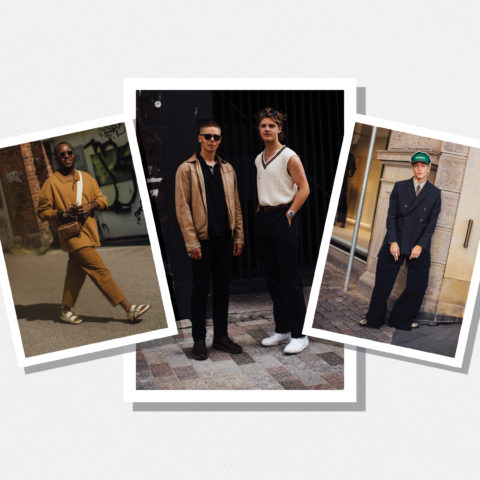Is street style dead? We explore its evolution, and why its absence might not be a bad thing


Fashion Week has brought us endless street style photos with endless arrays of bold choices and colours, but despite what we’re seeing, Marc Jacobs thinks street style is on its way out.
“What I see in the street now, doesn’t interest me,” the designer told reports in London last week. “I am so tired of street style looks.”
But without street style, who are our new fashion leaders? Since exploding in 2007, street style has been considered the new school of trendsetting, acting as proof that it’s not just possible to incorporate runway with mall brands, but that abandoning the runway altogether can still make for an interesting look. As such, street style began to stand for rebellion. It represented an alternative to high fashion, and championed self-expression over trends or rules. Street style reflected personal tastes over designers’, symbolizing a fight against the elitism that divided the runway and sidewalk.
So of course, like all good things, it caught on. And as the relevance of street style increased, so did a new kind of hierarchy. Thanks to social media, brand handouts, and armies of photogs, “cool kids” of street style began springing up, creating a dynamic similar to that of a high school cafeteria (only with much more flattering photos). Suddenly, the movement had turned into just another extension of elitism. Which is a concept that not even high fashion wants to align itself.
At least that’s what we can take from Kanye West, a man whose flair for expensive eccentricities has given way to an appreciation for normcore and fashion equality. Recently, the rapper designed for Adidas and has been vying for the Gap. Which is a feat, considering he once name-dropped Maison Martin Margiela with relish.
“I think high fashion is about elitism and separation, and I am completely opposed to that,” he told The Telegraph. “I hate the concept of separatism. Elitism. Classicism. We’re all equal.”
So if one of high fashion’s princes is singing that tune, street style — the sector meant to rebel against runway-driven elitism — should be singing the same. And this could be difficult, considering street style now seems like an extension of elitism, which means it really should die out. . . . Right?

Not necessarily—despite what you may have read over the last couple months. Last week, Fashionista revealed how some fashion houses pay bloggers off with free pieces and generous handouts in exchange for an Instagram shot and/or social media shot-out, while Racked ran an expose of street style’s demise (starting in 1905 with Edward Linley’s cartoon sketches of stylish women in London, and ending with Tommy Ton’s 2014 choice to shut down his blog). Last fall, Vice even sent out a writer in the most ridiculous outfit imaginable, documenting the way thirsty photogs captured what they thought was an example of aesthetic eccentricity. So yes, through these, street style seemed like a parody of itself—another bought and paid for runway, or another way of differentiating between “us” (the style elite) and “them” (everybody else).
Even “real” street style photography and representation (like you’d see in work by Bill Cunningham) seems so stacked with money and designer influence it’s impossible to differentiate between real self-expression and a savvy way of wearing head-to-toe whomever. Which I think it a whole other problem: if we begin chalking bloggers up as legitimate street style wearers versus those “employed” by a brand, we’re judging them just as we feel judged by the rest of the fashion industry.
Which is why a comment by somebody like Jacobs — a designer whose first mainstream collection was seen as street style/cultural ripoff — is both bang-on and problematic. True: designers have embedded themselves so deeply into street style that it’s almost impossible to look at a style and see something entirely new, but that snap judgement is just another form of elitism; it’s another way we pit “them” against “us.” Do payoffs and free pieces prevent pure self-expression? Of course. But good luck finding 100% unadulterated self anywhere in the world — fashion is also armour, and can also reflect who somebody wants to be that day. (And sometimes, I’d rather you see me decked out in fancy-ass clothes over the sweatpants I’d rather be wearing because I’m tired or bummed out.)
So if Street Style™ really is on its way out, it’s exciting to think of where else designers may draw inspiration from. Hell, it’s exciting to think of where we may draw inspiration from, or how much more willing we’ll be to take risks since there won’t be so much attention on day-to-day wear. But to condemn street style as a movement altogether doesn’t do it or anybody who wears clothes justice. (Especially since it can easily turn into a witch hunt of who’s legitimate and who we say isn’t.) Sure, less emphasis on who’s wearing what in a candid setting may allow us to dress in the pieces that we want to wear, and it may also give us a break from the excess of the fashion world that we can look at trends objectively and decide which to adopt (or which ones not to).
But let’s remember that street style should never really go away away. Because while we may use its reprieve to pick up more reasonably-priced Kanye West-designed clothes, without street style, we may not have had the guts or inspiration to wear them at all.







